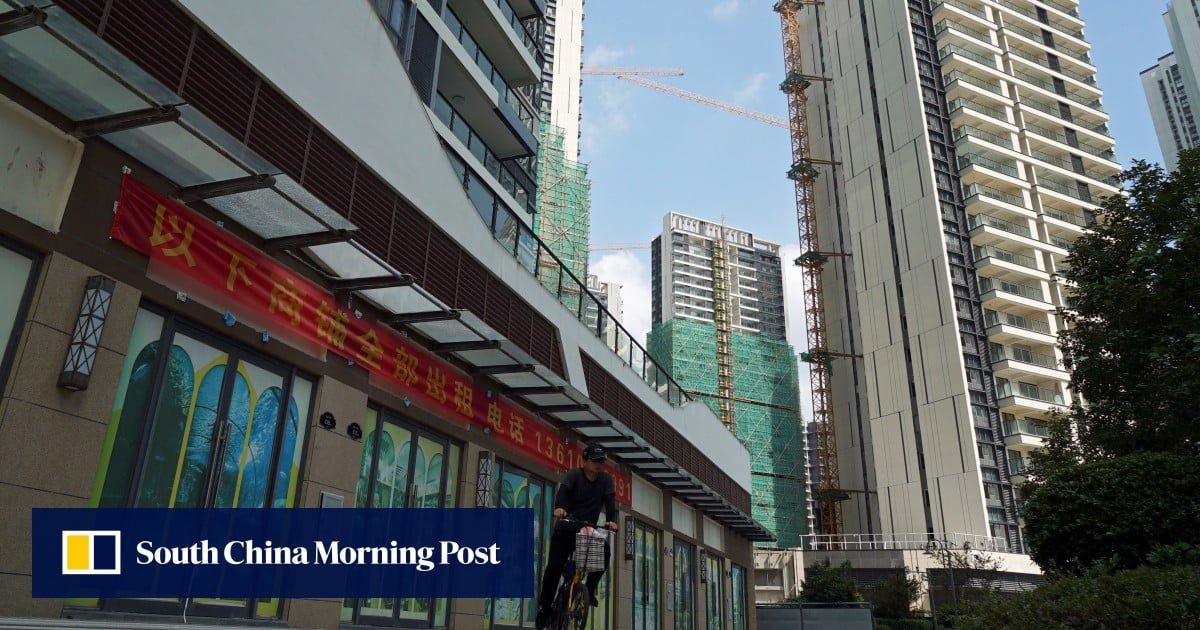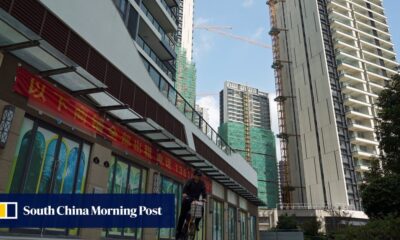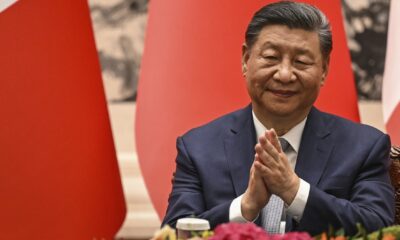China
Ullens Spotlights Chinese Architecture, Inspired by Duchamp
For its first architecture show, the Ullens Center for Contemporary Art in Beijing will spotlight Yung Ho Chang, a Chinese architect who teaches at MIT, and cites Hitchcock and Duchamp as influences.

For its first architecture show, the Ullens Center for Contemporary Art in Beijing will spotlight Yung Ho Chang, a Chinese architect who teaches at MIT, and cites Hitchcock and Duchamp as influences.
After keeping its currency tightly linked to the US dollar for years, China in July 2005 revalued its currency by 2 % against the US dollar and moved to an exchange rate system that references a basket of currencies.
The Chinese government faces numerous economic development challenges, including:
(a) reducing its high domestic savings rate and correspondingly low domestic demand through increased corporate transfers and a strengthened social safety net;
(b) sustaining adequate job growth for tens of millions of migrants and new entrants to the work force; (c) reducing corruption and other economic crimes; and
(d) containing environmental damage and social strife related to the economy’s rapid transformation.
The government has also focused on foreign trade as a major vehicle for economic growth.
The restructuring of the economy and resulting efficiency gains have contributed to a more than tenfold increase in GDP since 1978.
Agricultural output has been vulnerable to the effects of weather, while industry has been more directly influenced by the government.
A report by UBS in 2009 concluded that China has experienced total factor productivity growth of 4 per cent per year since 1990, one of the fastest improvements in world economic history.
China’s increasing integration with the international economy and its growing efforts to use market forces to govern the domestic allocation of goods have exacerbated this problem.
China now ranks as the fifth largest global investor in outbound direct investment (ODI) with a total volume of $56.5 billion, compared to a ranking of 12th in 2008, the Ministry of Commerce said on Sunday.
But “this is just a beginning.
China is expected to have 200 million cars on the road by 2020, increasing pressure on energy security and the environment, government officials said yesterday.
China’s challenge in the early 21st century will be to balance its highly centralized political system with an increasingly decentralized economic system.
Since the late 1970s, China has decollectivized agriculture, yielding tremendous gains in production.
Except for the oasis farming in Xinjiang and Qinghai, some irrigated areas in Inner Mongolia and Gansu, and sheltered valleys in Tibet, agricultural production is restricted to the east.
Livestock raising on a large scale is confined to the border regions and provinces in the north and west; it is mainly of the nomadic pastoral type.
Coal is the most abundant mineral (China ranks first in coal production); high-quality, easily mined coal is found throughout the country, but especially in the north and northeast.
China is among the world’s four top producers of antimony, magnesium, tin, tungsten, and zinc, and ranks second (after the United States) in the production of salt, sixth in gold, and eighth in lead ore.
Coal is the single most important energy source in China; coal-fired thermal electric generators provide over 70% of the country’s electric power.
Taiyuan and Xi’an are important centers in the less populated interior, and Lanzhou is the key communications junction of the vast northwest.
See original here:
Ullens Spotlights Chinese Architecture, Inspired by Duchamp
Business
China’s Golden Rooster Film Festival Kicks Off in Xiamen – Thailand Business News

The 2024 China Golden Rooster and Hundred Flowers Film Festival began in Xiamen on Nov 13, featuring awards, cultural projects worth 31.63 billion yuan, and fostering international film collaborations.
2024 China Golden Rooster and Hundred Flowers Film Festival Opens
The 2024 China Golden Rooster and Hundred Flowers Film Festival commenced in Xiamen, Fujian province, on November 13. This prestigious event showcases the top film awards in China and spans four days, concluding with the China Golden Rooster Awards ceremony on November 16.
The festival features various film exhibitions, including the Golden Rooster Mainland Film Section and the Golden Rooster International Film Section. These showcases aim to highlight the achievements of Chinese-language films and foster global cultural exchanges within the film industry.
On the festival’s opening day, a significant milestone was reached with the signing of 175 cultural and film projects, valued at 31.63 billion yuan ($4.36 billion). Additionally, the International Film and Television Copyright Service Platform was launched, furthering the globalization of Chinese film and television properties.
Source : China’s Golden Rooster film festival opens in Xiamen – Thailand Business News
China
Italy and China New DTA Set to Take Effect in 2025: Important Changes and Implications

Italy ratified an upgraded Double Tax Agreement (DTA) with China, effective in 2025, to reduce tax burdens, prevent evasion, and enhance investment. The DTA introduces modern provisions aligned with international standards, targeting tax avoidance and improving dispute resolution for Italian businesses.
Italy recently ratified the upgraded Double Tax Agreement (DTA), which will finally take effect in 2025. This agreement was signed in 2019 and was designed to reduce tax burdens, prevent tax evasion, and promote Italian investment in China.
On November 5, 2024, Italy’s Chamber of Deputies gave final approval to the ratification of the 2019 Double Tax Agreement (DTA) between Italy and China (hereinafter, referred to as the “new DTA”).
Set to take effect in 2025, the new DTA is aimed at eliminating double taxation on income, preventing tax evasion, and creating a more favorable environment for Italian businesses operating in China.
The ratification bill for the new DTA consists of four articles, with Article 3 detailing the financial provisions. Starting in 2025, the implementation costs of the agreement are estimated at €10.86 million (US$11.49 million) annually. These costs will be covered by a reduction in the special current expenditure fund allocated in the Italian Ministry of Economy’s 2024 budget, partially drawing from the reserve for the Italian Ministry of Foreign Affairs.
During the parliamentary debate, Deputy Foreign Minister Edmondo Cirielli emphasized the new DTA’s strategic importance, noting that the agreement redefines Italy’s economic and financial framework with China. Cirielli highlighted that the DTA not only strengthens relations with the Chinese government but also supports Italian businesses, which face increasing competition as other European countries have already established double taxation agreements with China. This ratification, therefore, is part of a broader series of diplomatic and economic engagements, leading up to a forthcoming visit by the President of the Italian Republic to China, underscoring Italy’s commitment to fostering bilateral relations and supporting its businesses in China’s complex market landscape.
The newly signed DTA between Italy and China, introduces several modernized provisions aligned with international tax frameworks. Replacing the 1986 DTA, the agreement adopts measures from the OECD/G20 Base Erosion and Profit Shifting (BEPS) Project and the OECD Multilateral Instrument (MLI), targeting tax avoidance and improving dispute resolution.
The Principal Purpose Test (PPT) clause, inspired by BEPS, is one of the central updates in the new DTA, working to prevent treaty abuse. This clause allows tax benefits to be denied if one of the primary purposes of a transaction or arrangement was to gain a tax advantage, a move to counter tax evasion through treaty-shopping.
| This article was first published by China Briefing , which is produced by Dezan Shira & Associates. The firm assists foreign investors throughout Asia from offices across the world, including in in China, Hong Kong, Vietnam, Singapore, and India . Readers may write to info@dezshira.com for more support. |
Read the rest of the original article.
Business
China’s New Home Prices Stabilize After 17-Month Decline Following Support Measures

China’s new home prices fell for the 17th month in October, declining 0.5% from September, but slowing, indicating potential market stabilization amid supportive measures. Second-hand home prices showed mixed trends.
Decline in China’s Home Prices Stabilizes
China’s new home prices continued to decline in October for the 17th consecutive month, although the drop showed signs of slowing. Recent support measures from Beijing appear to be inching the market toward stabilization, as evidenced by a lighter decline compared to earlier months.
Monthly and Yearly Comparisons
According to the latest data from the National Bureau of Statistics, new home prices across 70 mainland cities fell by 0.5% from September, marking the smallest decrease in seven months. Year-on-year, prices dropped by 6.2%, slightly worse than the September decline of 6.1%. In tier-1 cities like Beijing and Shanghai, prices decreased by 0.2%, a smaller fall than 0.5% in the previous month.
Second-Hand Home Market Trends
Second-hand home prices in tier-1 cities experienced a 0.4% increase in October, reversing a 13-month downward trend. Conversely, tier-2 cities observed a 0.4% drop in second-hand prices, while tier-3 cities faced a similar 0.5% decline. Overall, recent trends indicate a potential stabilization in China’s property market.
Source : China’s new home prices slow 17-month decline after support measures kick in












